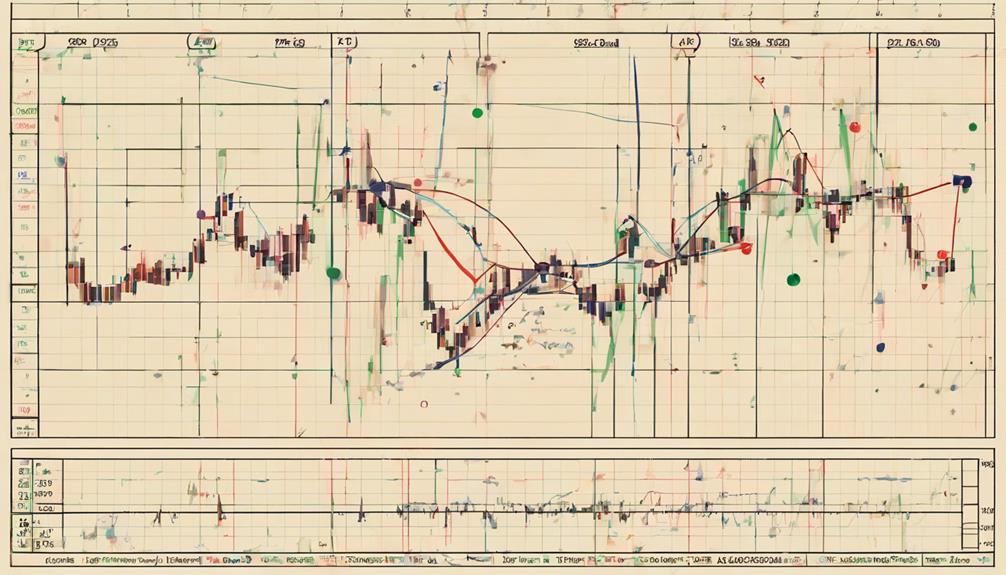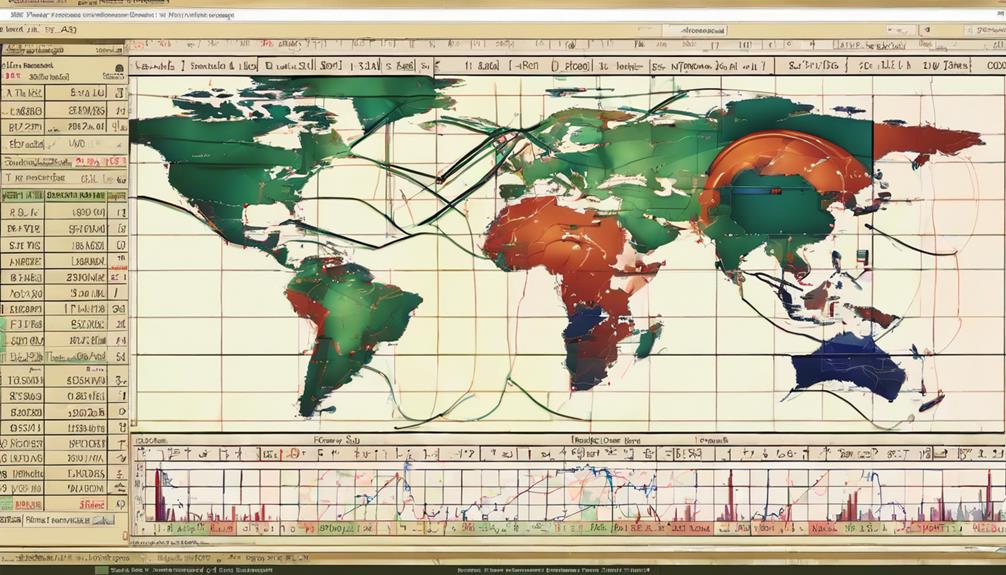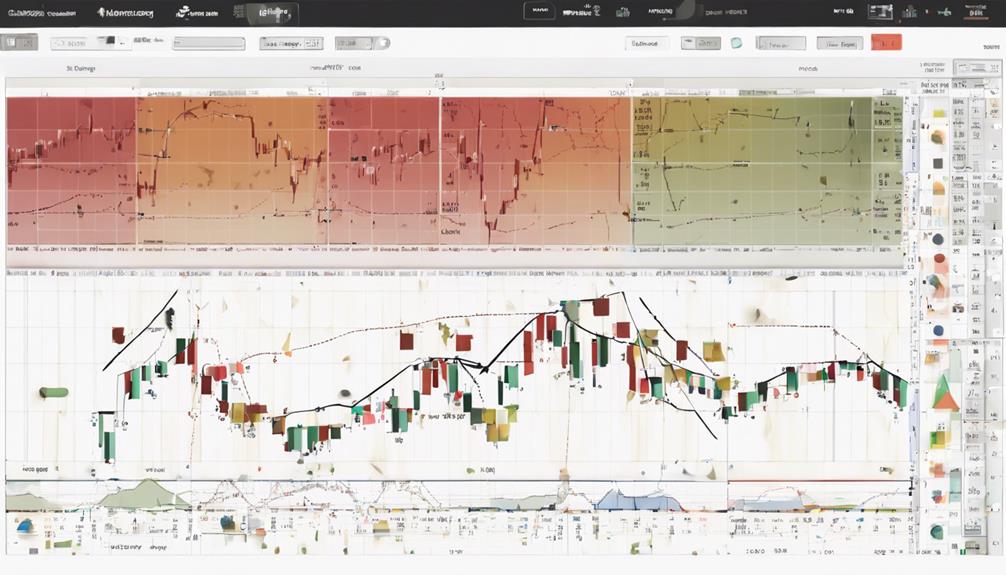Exploring the realm of financial forecasting through the lens of Gann Theory unveils a structured methodology that has intrigued traders for decades. By deciphering the complexities of market behavior using geometric principles, William D. Gann proposed a unique system that continues to captivate seasoned investors and novices alike.
The application of Gann Theory in predicting market trends presents a compelling opportunity for traders seeking a strategic edge in their investment pursuits. As we journey deeper into the intricacies of Gann's methods, the potential for unlocking hidden patterns and gaining a competitive advantage becomes increasingly apparent.
Fundamentals of Gann Theory
The foundation of Gann Theory lies in its systematic approach to financial forecasting through the utilization of natural geometric shapes and angles developed by William D. Gann in the early 1900s. This theory is based on the idea that market movements are not random but follow specific geometric patterns.
By applying Gann Theory, traders can analyze market trends, identify support and resistance levels, and predict price movements with more accuracy. One of the key components of Gann Theory is the concept of Gann Angles, with the 1×1 angle at 45 degrees being particularly significant. These angles help traders determine the strength and direction of trends in the market.
Through the use of geometric shapes and angles, Gann Theory provides a framework for comprehensive market analysis, enabling traders to make informed decisions in the stock market. Understanding the fundamentals of Gann Theory is essential for any trader looking to enhance their financial forecasting abilities and improve their overall trading strategies.
Gann Angles Explained

Building upon the foundational principles of Gann Theory, an in-depth exploration of Gann Angles provides traders with a strategic framework for predicting future price movements using geometric angles on price charts.
Gann Angles are lines that help forecast financial markets by identifying potential areas of support and resistance. These angles, such as the 1×1 angle representing a 45-degree line, play a crucial role in determining the balance between bullish and bearish trends.
Traders utilize different Gann Angles like 1×2 or 2×1 to gauge the strength and direction of price movements, aiding in making informed decisions. By understanding and applying Gann Angles effectively, traders can enhance the accuracy of forecasting future price movements.
Advanced Forecasting Techniques

Utilizing sophisticated mathematical models and comprehensive data analysis, advanced forecasting techniques within Gann Theory enable traders to generate precise predictions for financial markets. These techniques leverage a combination of Gann trading strategies, technical analysis tools, and market movements to forecast future price and time dynamics accurately.
By integrating Gann Angles, support and resistance levels, price charts, trend lines, time cycles, and price targets, traders can anticipate potential market trends, reversals, and key turning points. The advanced forecasting techniques in Gann Theory empower traders to interpret complex market data effectively and make informed decisions to capitalize on profitable opportunities.
Through the utilization of these sophisticated tools, traders can enhance their forecasting accuracy, adapt to evolving market conditions, and develop robust strategies for successful financial trading. This strategic approach enables traders to stay ahead of market fluctuations and optimize their trading outcomes by aligning their actions with projected price movements and time cycles.
Implementing Gann Trading Strategies

Given the foundation established through advanced forecasting techniques in Gann Theory, the implementation of Gann trading strategies becomes a pivotal aspect for traders seeking to navigate financial markets with precision and foresight. Traders use Gann Angles to draw geometric patterns that help identify potential support and resistance levels in the market.
By employing Gann's time study model, traders can predict future price movements with greater accuracy. The use of Gann Fan, a tool within Gann theory, aids in understanding potential market moves and developing effective trading strategies. These strategies enable traders to enhance their technical analysis skills, make informed trading decisions, and ultimately improve their overall trading performance.
Implementing Gann theory provides traders with a structured framework for analyzing market trends and dynamics, offering a systematic approach to forecasting financial markets with a focus on both short-term fluctuations and long-term trends.
Mastering Gann Theory for Forecasting

Mastering Gann Theory for forecasting involves a comprehensive understanding of geometric shapes and angles to predict future price movements in financial markets. Gann Theory, with its focus on Gann Angles such as the 1×1 angle, plays a crucial role in forecasting market trends accurately.
By providing a systematic framework for analyzing stock market behaviors, Gann Theory enables traders to make informed decisions and develop a successful trading strategy. One key aspect of applying Gann Theory is the identification of support and resistance levels, which are essential for effective financial forecasting.
Traders who master Gann Theory can enhance their ability to predict investor activity and anticipate stock price reversals with a high degree of accuracy, sometimes up to 90%. Understanding the intricacies of Gann Theory equips traders with the tools necessary to navigate the complexities of financial markets and make well-informed forecasts regarding price movements and market trends.
What Are Some Practical Applications of Gann Theory in Financial Forecasting?
When it comes to financial forecasting, understanding the key Gann theory aspects can be incredibly beneficial. These aspects, such as time and price analysis, geometric angles, and pattern recognition, can be applied to predict future price movements in the stock market. By utilizing these principles, investors can make more informed decisions.
Frequently Asked Questions
How Do You Use Gann Theory?
To utilize Gann Theory, traders analyze geometric angles to predict price movements. This involves identifying support/resistance levels, studying patterns through price/time analysis, and systematically forecasting market trends. Gann Theory aids in making informed trading decisions by accurately predicting market trends and reversals.
What Is the Basis of My Forecasting Method Gann?
In the art of forecasting, the foundation lies in the intricate dance of patterns and cycles, where precision meets intuition. Gann Theory, with its geometric angles and time cycles, unveils the hidden symphony of market movements, guiding insightful predictions.
How Accurate Is Gann Theory?
Gann Theory demonstrates accuracy in financial forecasting up to 90% by leveraging natural geometric shapes and Gann Angles to predict market trends. Traders can benefit from this method's ability to identify support, resistance levels, and potential reversals systematically.
What Is Gann Formula?
The Gann Formula is a mathematical tool employed in financial forecasting, utilizing geometric angles and patterns to project future price movements. By analyzing historical data, traders can pinpoint key support and resistance levels, aiding in strategic decision-making for trading.
Conclusion
In conclusion, the application of Gann Theory in financial forecasting offers traders a unique and innovative approach to predicting market movements. By mastering Gann Angles and utilizing advanced forecasting techniques, traders can make informed decisions and improve their trading strategies.
This guide serves as a valuable resource for those looking to enhance their forecasting abilities and stay ahead in the competitive world of financial markets.
